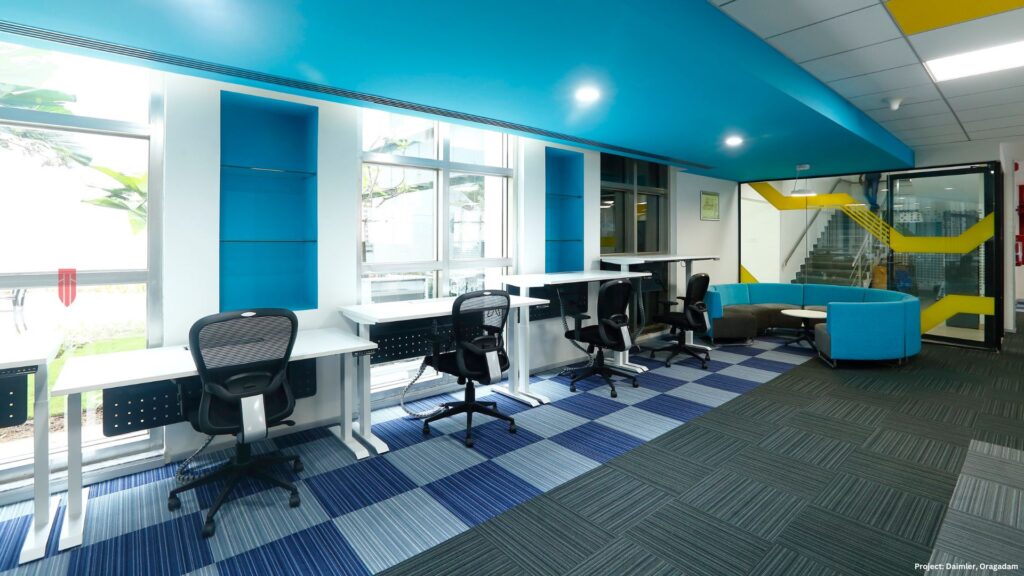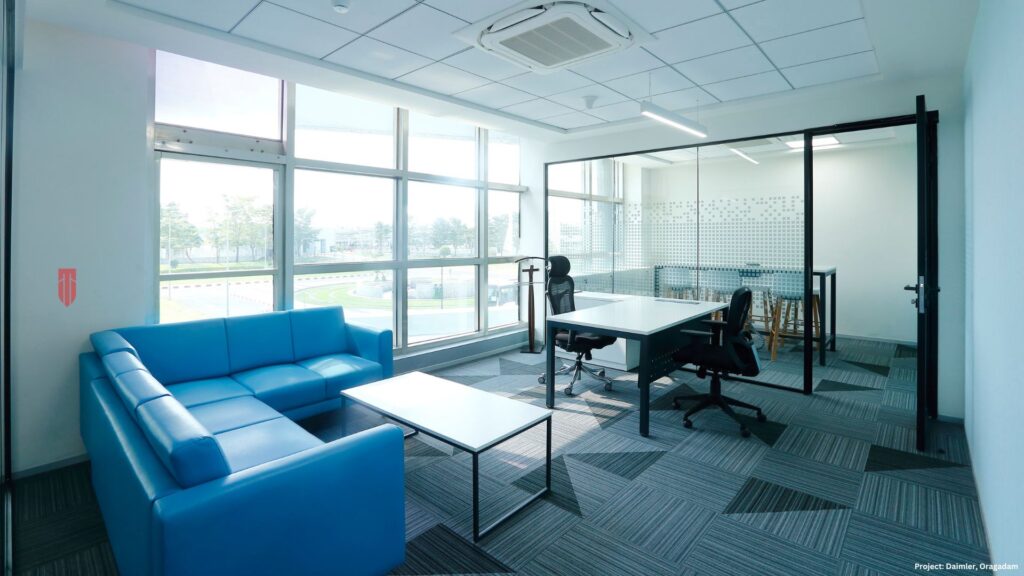How Can Ergonomics in Office Interior Design Create a Productive and Healthy Office Space?
1. Understanding the Foundations of Ergonomics
Ergonomics is based on the principle of optimizing the interaction between individuals and their environment to minimize the risk of discomfort, fatigue, and musculoskeletal disorders. Businesses can create a workspace that supports employees’ physical health by considering factors such as proper posture, body mechanics, and equipment design. The guidance and expertise of office interior designers ensure that the office space is designed to maximize ergonomics and productivity, incorporating elements such as adjustable workstations, ergonomic chairs, and suitable furniture layouts.
2. Designing an Ergonomic Workstation
A key aspect of creating a healthy office space is designing ergonomic workstations. This includes selecting appropriate office furniture and configuring it to promote proper posture and body alignment. With the help of office interior designers, businesses can choose ergonomic chairs with adjustable features, such as lumbar support and height adjustments, to help employees maintain a neutral spine position and reduce strain on the back. Similarly, adjustable desks allow employees to alternate between sitting and standing, promoting better blood circulation and reducing the risk of sedentary-related health issues. The expertise of office interior designers ensures that the office layout and furniture selection are tailored to the specific needs of the employees and the business, optimizing both comfort and productivity.

3. The Role of Ergonomic Accessories
In addition to furniture, office interior designers recognize the significance of ergonomic accessories in creating a healthy and productive office space. Adjustable monitor stands help position the screen at eye level, reducing strain on the neck and eyes. Ergonomic keyboards and mice, designed to minimize strain on the wrists and hands, are also crucial in preventing conditions like carpal tunnel syndrome. Identify the most suitable ergonomic accessories for the specific needs of the employees, ensuring that they are seamlessly integrated into the overall office design.
4. Lighting and Ergonomics
Proper lighting is another crucial factor in creating a healthy office space. Insufficient or harsh lighting can lead to eye strain, headaches, and decreased concentration. Office interior designers, with their expertise, understand the importance of lighting in ergonomic design. They can recommend suitable lighting solutions that balance natural light and artificial light sources. Integrating adjustable task lighting that allows employees to control brightness and direction, can help reduce eye fatigue and enhance visual clarity, creating a more comfortable and productive work environment.

5. Educating Employees and Promoting Awareness
Creating a healthy and productive office space requires educating employees about the importance of ergonomics and promoting awareness of best practices. Office interior designers can collaborate with businesses to develop customized training programs that address the specific ergonomic needs of the office space. These programs can include training sessions or workshops that educate employees on how to set up their workstations correctly, maintain good posture, and take breaks to avoid prolonged sitting. By raising awareness and encouraging employees to report any discomfort early on, businesses can prevent minor issues from developing into chronic conditions
Ergonomics is an essential aspect of creating a healthy and productive office space. By incorporating ergonomic principles into office design, furniture selection, and employee education, businesses can reap the benefits of improved employee well-being and productivity. Investing in ergonomic workstations, accessories, and proper lighting reduces the risk of musculoskeletal disorders and enhances comfort, engagement, and job satisfaction. By prioritizing ergonomics, businesses demonstrate their commitment to the well-being of their employees, leading to a more positive and productive work environment.




Comments
Post a Comment